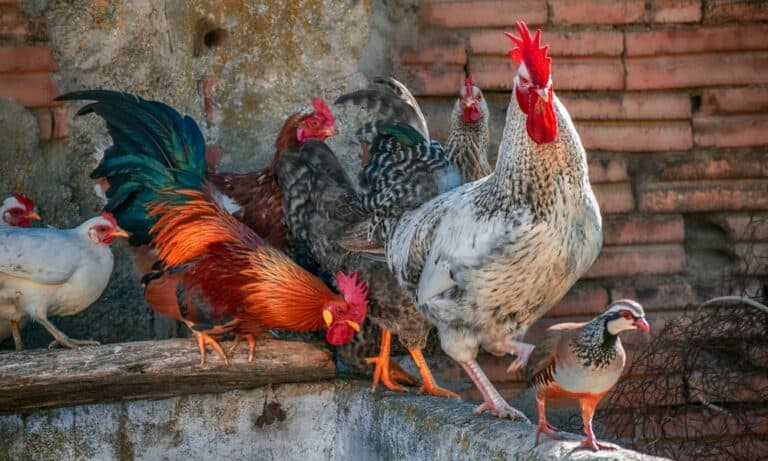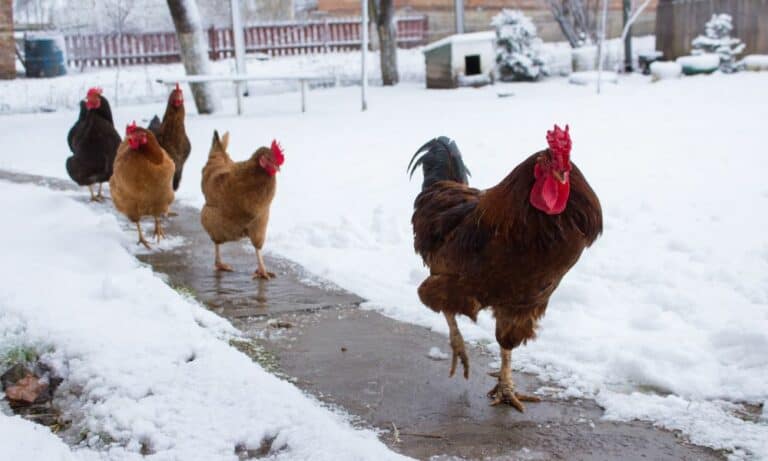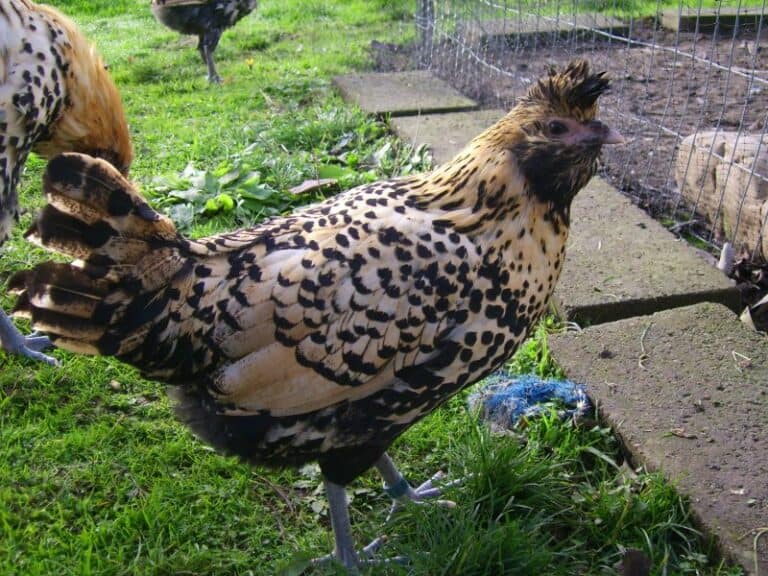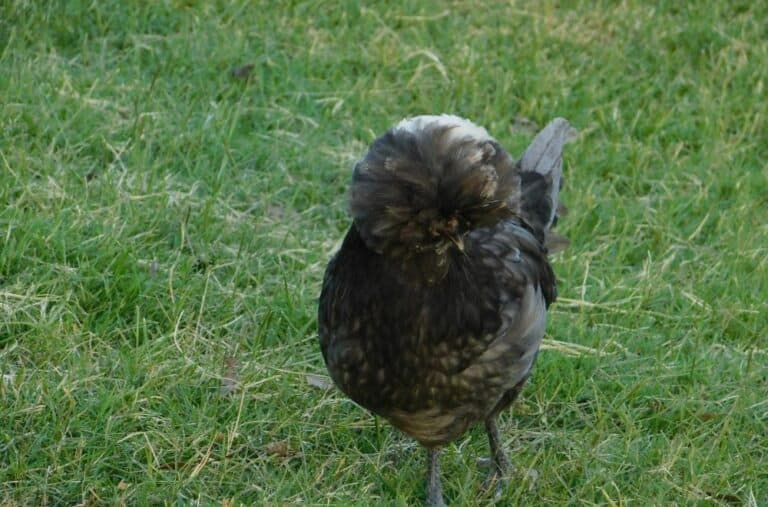Are you a chicken enthusiast looking to add some variety to your flock? Look no further than the Houdan Chicken. This unique chicken breed of French origin has gained popularity over the years among poultry lovers, especially those new to raising chickens, because of how relatively easy they are to maintain in that they don’t require much to grow and produce.
The Houdan chicken has uncommon features in its appearance that many find appealing. Hence, it’s popularly raised as an ornamental bird. Also, aside from its looks, the Houdan lays more eggs than several chickens of different breeds, making it valuable, especially if you’re raising chickens primarily for egg production.
In this post, we’ll look at some important facts about the Houdan Chicken, its history, characteristics, and other things to consider when raising it.
Tracing the Origin of the Houdan Chicken
The Houdan chicken gets its name from a small French town, Houdan, in the west of Paris, where it first originated. Although no one knows how and when this chicken breed came to be, there are many speculations from chicken enthusiasts that it was first discovered between the 6th and 8th century AD.
As a five-toed poultry breed, its European origin has some credibility because, at the time, there were many five-toed chickens, such as the Dorking chicken, Sultan, and Polish chicken, scattered across the continent. However, the Houdan chicken started gaining popularity in the mid-19th century after it was imported into England.
Many English chicken keepers fawned over its looks and added a couple to their flocks, raising them for ornamental purposes rather than food. Fifteen years later, it found its way into North America and became quite a rave among hobbyists and small farm owners. Many chicken lovers kept the unique breed as show birds, while others valued it for its meat.
In recent times, however, they’ve become rarer and almost extinct, and you’ll often find at least one in the flock of some backyard chicken raisers as an attempt to preserve the breed. Likewise, many have come to value the Houdan chicken as a good egg layer and rear it for this purpose.
Physical Characteristics and Appearance of Houdan Chicken
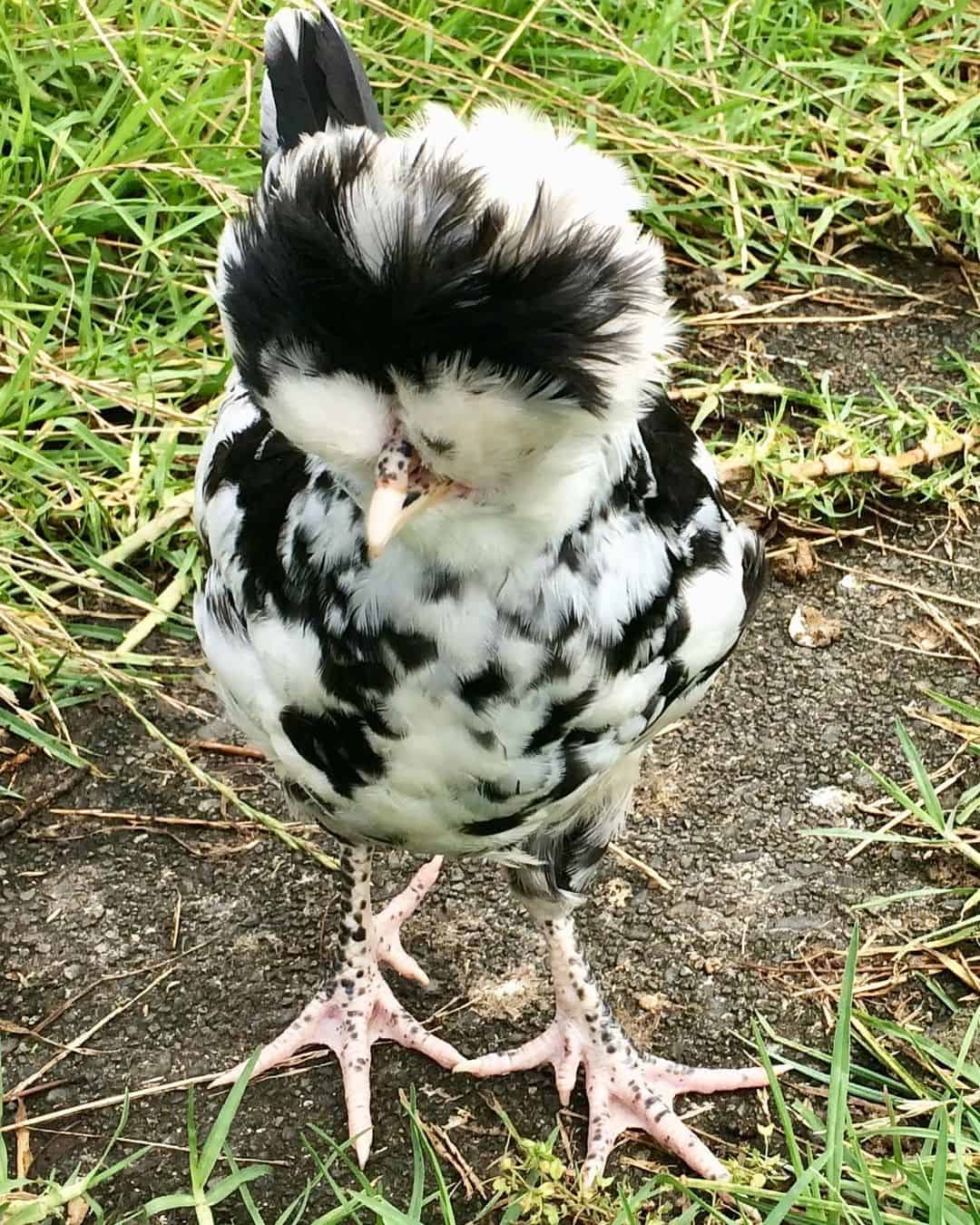
The Houdan chicken has a striking appearance that sets it apart from other breeds. This domestic bird typically has a rectangular body set on sturdy, short, and featherless legs. Although there are several varieties of Houdan chickens, only the mottled and white types are recognized by the American Poultry Association.
One of the most noticeable features of this poultry bird is the magnificent v-shaped comb that adorns the head of the males, while the females have a smaller comb and wattle. Males and females have full feathers covering their entire bodies, including parts of their heads in the form of beards, large crests, and tufts around their ears.
Because of their extra fifth toe, Houdan chickens tend to have noticeably different gait and appear to strut when they walk. Likewise, Houdans are typically average-sized chickens, with the males being bigger than the females. For instance, an average Houdan rooster weighs around 5.5 to 6.5 pounds, while an average hen weighs between 4.5 to 5.5 pounds.
Check the table below to easily identify the distinguishing characteristics of the Houdan chicken
| Characteristics | Houdan Chicken |
| Origin | France |
| Size | Medium |
| Breed purpose | Dual-purpose utility breed |
| Breed type | Mottled and White (United States), Gray and Cuckoo |
| Adult Size (rooster) | 5.5 – 6.5 pounds |
| Adult size (hen) | 4.5 – 5.5 pounds |
| Cold tolerance | Yes |
| Comb Type | V-shaped (United States), butterfly, and oak leaf-shaped |
| Egg size | Medium |
| Egg color | white |
| Average egg production | 140 – 170 eggs per year |
Behavior/Temperament of Houdan Chicken
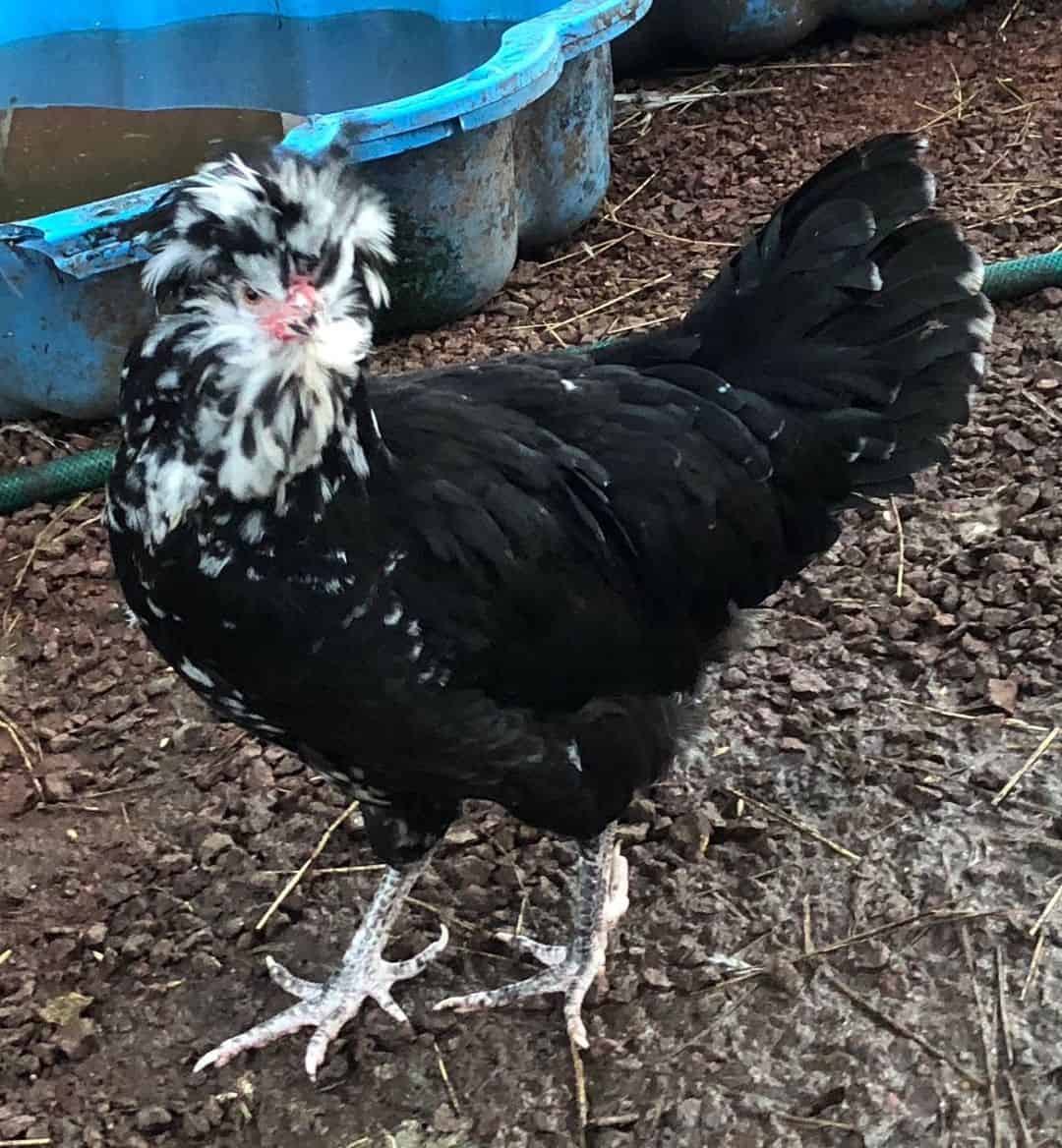
Contrary to their lofty appearance, Houdans are generally very gentle and lovely birds. They pose no difficulty handling, hence, they’re often recommended to beginners in poultry keeping, especially those who intend to raise chickens in their backyard.
Because of their calm and pleasant nature, many people keep them as show birds, displaying them to visitors and other chicken enthusiasts. Also, they’re less noisy and not easily flustered, which is an excellent choice for backyard chicken raisers who don’t want to disturb the neighbors.
The Houdan chicken makes one impressively friendly breed and is easily a good pet. They also don’t mind confinement for a while as long as no one’s purposely trying to agitate them while in a cage.
How Houdan Chickens Breed: Incubation and Hatching
Houdan chickens are decent egg producers and breeders and may lay about three eggs weekly. So if you have some in your flock, you can expect to have an average of 150 eggs yearly. Of course, many of these eggs should be fertilized if you have both males and females in your flock.
A healthy egg should be medium-sized and white or cream, something to keep in mind if you intend to increase your flock. And although you may decide to incubate these eggs artificially, it’s worth noting that Houdan hens would rather brood their eggs on their own. So more often than not, they’ll prefer sitting on their nests and incubating their eggs.
However, because they lay many eggs before reaching a clutch, some may get broken during the natural incubation process. In this case, it’s best to remove some to incubate on your own and keep just a few for them to sit on so that you can have more eggs hatch into baby chicks.
Like many other chicken breeds, Houdan eggs will incubate at 98 to 102 degrees Fahrenheit and at 50 to 53 percent humidity for the entire 21-day incubation period. And once they’ve hatched, the new Houdan chicks will need high-quality starter feeds and clean water to grow healthy.
Raising Houdan Chickens
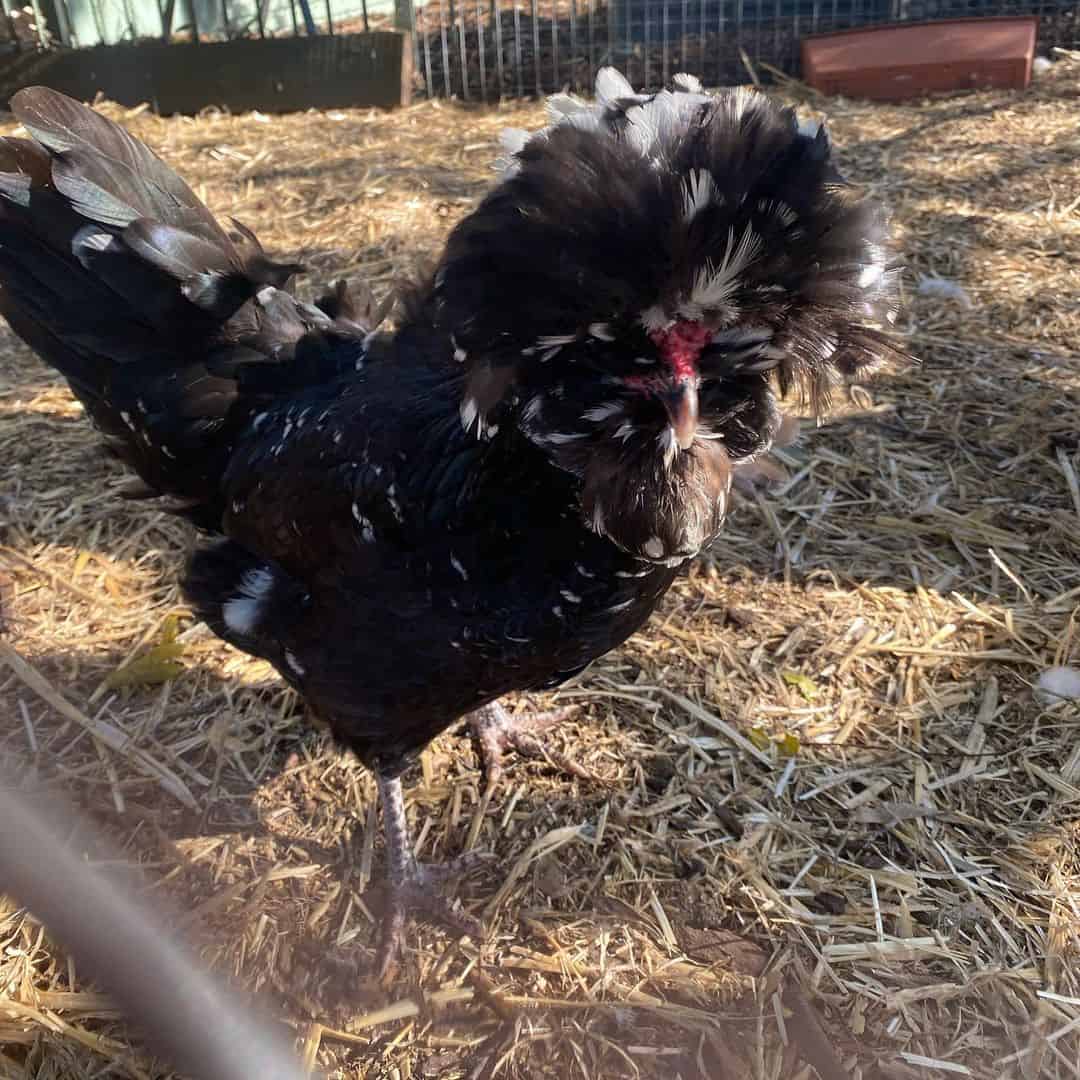
Houdan chickens are curious birds that love open spaces with enough room to explore their surroundings; hence, they may require more space than other breeds. However, if you’d rather have them in a coop at all times, ensure you provide a spacious one that will accommodate their long tails and allow them freely move around.
When it comes to diet, Houdans are not particularly selective. They will eat the same things as every other breed and forage for insects and crawlers for the fun of it. They also love staying hydrated as much, so ensure they have access to clean water at all times.
Caring for Houdan chickens should be easy, even for new chicken raisers. Typically, they don’t require special care or attention beyond what other breeds need. However, ensure you pay attention to their health and quickly separate anyone suspected to be ill from the rest of the flock to avoid disease transfer.
So, in a nutshell, to raise Houdan chickens:
- Provide a spacious environment for them.
- Ensure they constantly have clean water.
- Pay attention to their health.
Health Concerns and Common Diseases in Houdan Chicken
Houdan chickens are remarkably healthy and less prone to diseases compared to other chicken types. However, as with many other breeds, they are susceptible to common poultry diseases such as fowl pox, infectious bronchitis, Marek’s disease, and Newcastle disease. The good news, though, is that you can treat these diseases the same way you would any other breed.
Also, because they have beards, crests, and tufts, they’re more likely to get infested with mites than chickens who lack these features. As a result, you’ll need to pay more attention to keeping the environment clean, especially if they’re kept in a coop. You’ll also need to take out and properly dispose of old hay and straw and replace them with fresh, clean ones.
Another thing to note regarding their health is that Houdan chickens are prone to diseases associated with cold; hence, you must be extra attentive to them in cold weather and ensure their coops are warm enough by providing them with extra heat sources and stacking the ground with extra hay or straw during the winter.
Houdan Chickens as Show Birds
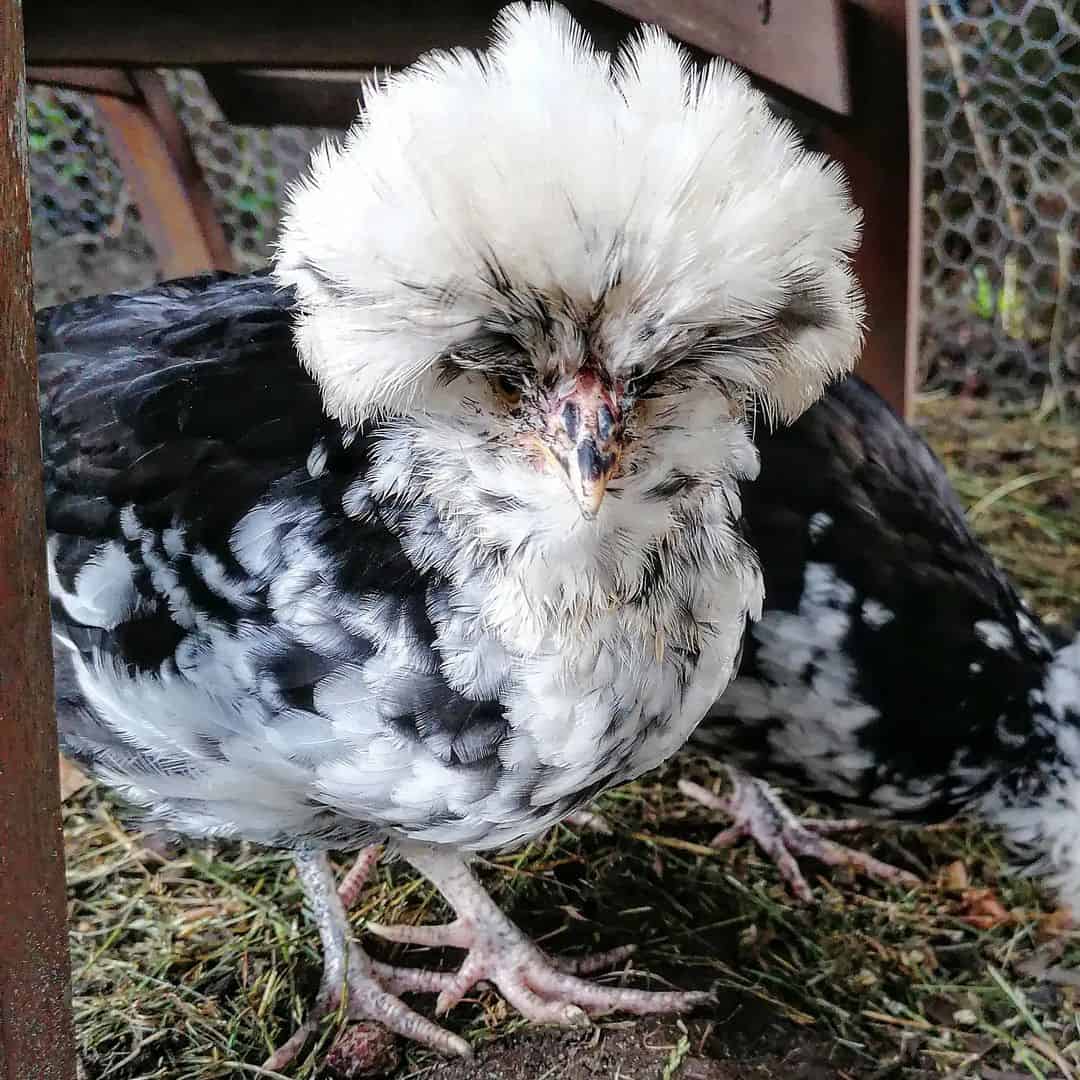
Asides from being one of the most beautiful poultry birds, the Houdan chicken’s heritage and rich history also come into play in making them excellent show birds. Likewise, their calm nature and friendliness give them the appeal that many judges look out for in showing contests.
Although several poultry birds are ideal for showing, no other enjoys human interaction quite as much as the Houdan does. Its relaxed nature in situations that’ll unsettle most chicken breeds is admirable and sure to draw any judge’s attention. So if you’re considering getting a show bird, we highly recommend this unique breed.
Other Facts About the Houdan Chicken
We’ve covered a lot already but there are still some important facts about the Houdan chicken you should know:
- They live for an average of 8 to 10 years and may go on to live for even longer if well taken care of
- They are usually smaller than other popular chicken breeds like the Plymouth Rock and Rhode Island Red.
- There are just a few thousand Houdan chickens remaining in the world, making them a rare breed.
- They grow relatively slower than other breeds, needing about 6 to 8 months to reach full maturity.
- Some farmers in the past crossed the Houdan chicken with other breeds to create new varieties, such as the Crevecoeur and Polish chicken.
Conclusion
The Houdan chicken is a productive breed that will make a great addition to your backyard flock. It’s an excellent poultry bird and can serve as a pet while still laying pretty decent eggs for you. Also, by getting one, you’ll be doing the world some good by preserving and raising awareness of this delightful breed.
So should you decide to get a Houdan chicken or two, the information we’ve provided is enough to give you a good start regarding caring for them. Of course, we’ll be happy to answer any questions you have, so go ahead and ask them in the comment section.


